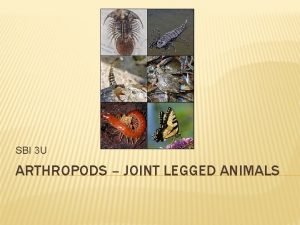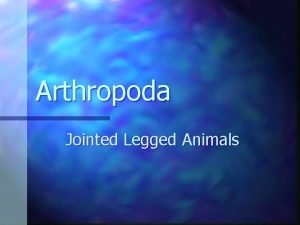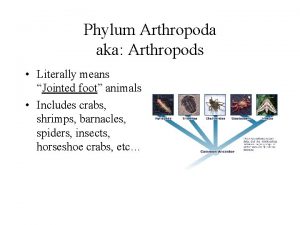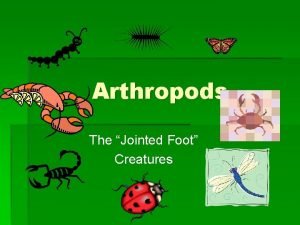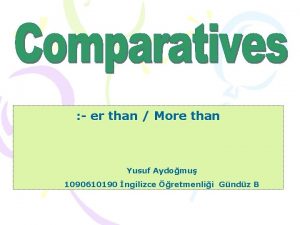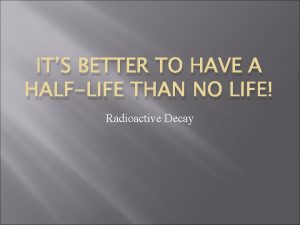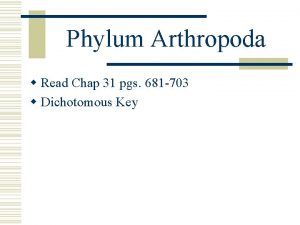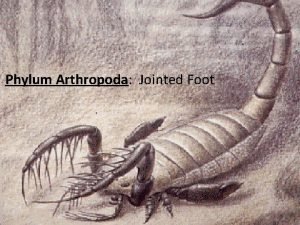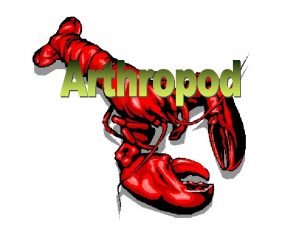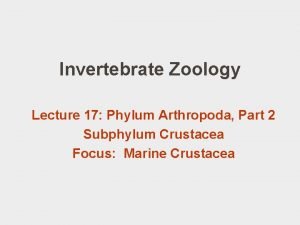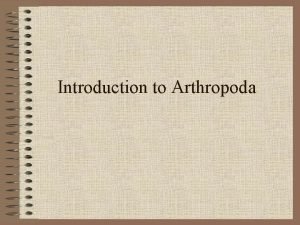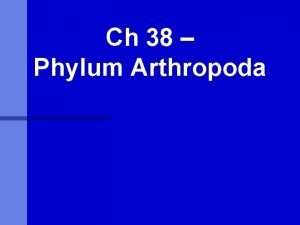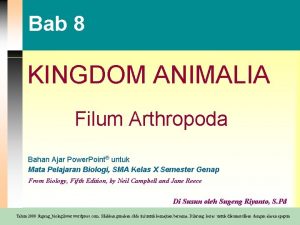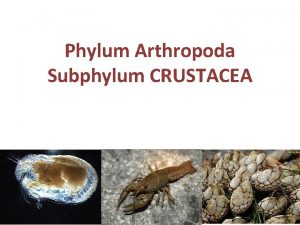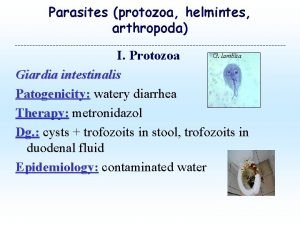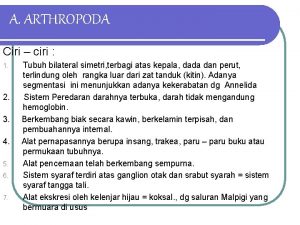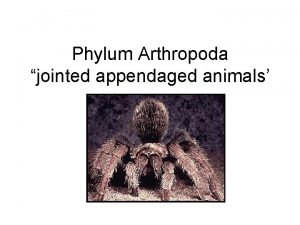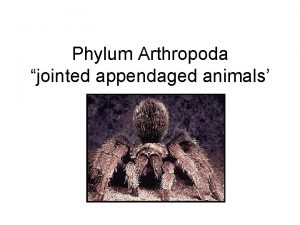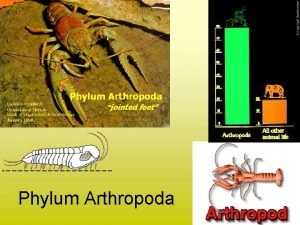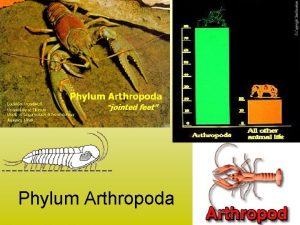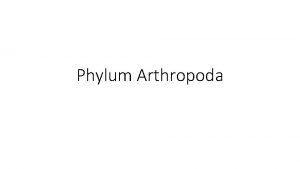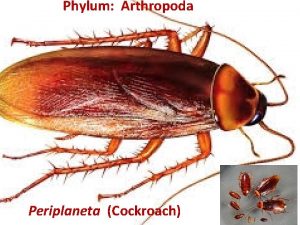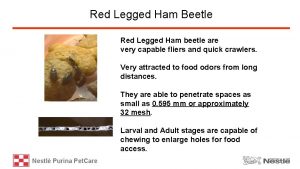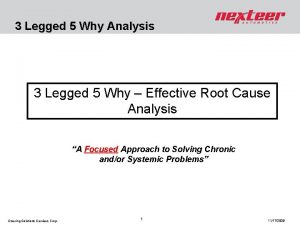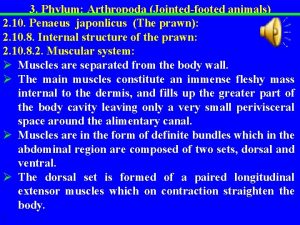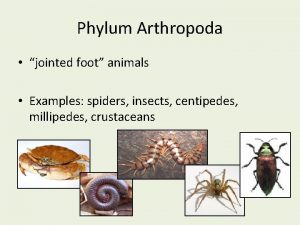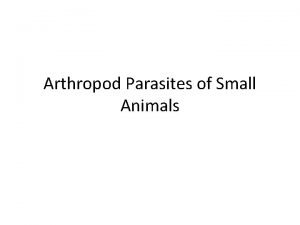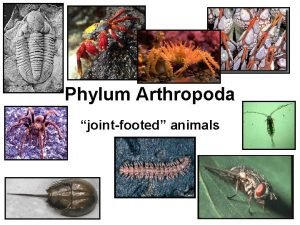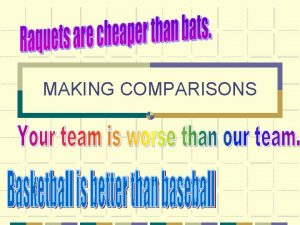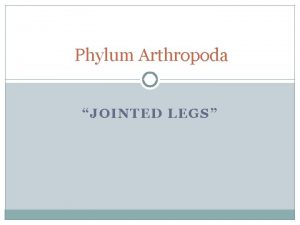Arthropoda Jointed Legged Animals Introduction n More than




























- Slides: 28

Arthropoda Jointed Legged Animals

Introduction n More than a million artrhopods have been identified to date. n More have yet to be discovered n Unbelievable diversity of animals

Subphyla n Subphylum Chelicerata – spiders, ticks, mites , scorpions, and horseshoe crabs n Subphylum Mandibulata Class Crustacea – crabs, lobster, shrimp n Class Diplopoda – Millipedes n Class Chilopoda – Centipedes n Class Insecta - Insects n

Body Plan: n Exoskeleton made of chitin Provides protection n Waterproof – restricts water loss n n Head, abdomen, thorax n Some leathery – insects n Some hard – ticks, crabs, lobster

Feeding: n Every method of feeding is represented by arthropods n n n Herbivores, carnivores, parasites, filter feeders and detritus feeders Some are specific, some (locusts) eat anything green Some crabs and insects eat other live animals Some eat animals and plants already dead External parasites, internal parasites Filter feeders – barnacles

Respiration: n 3 types of respiration n 1. gills n 2. book gills and book lungs n 3. tracheal tubes

Respiration: Book gills – Limulus , and book lungs spiders are arranged like pages in a book – more surface area

Internal Transport: n Well developed heart n open circulatory system – some vessels, but open into tissues n Blood moves into sinuses where it collects and is returned to the heart

Excretion: n n Solid wastes leave through the anus Nitrogen wastes are removed in various ways These are bathed in blood inside body sinuses The tubules remove wastes from the blood, concentrate it and then add it to undigested food before it leaves the body

Excretion: n Aquatic arthropods – diffusion through unarmored places on the body n Many aquatic arthropods (Lobster for one) use a pair of “green glands”

Response: Most have well developed nervous systems n all have a brain that consists of a pair of ganglia in the head n Pair of nerves run around esophagus and connect brain to spinal cord that runs around ventral side of body n Several more ganglia, one for each body segment usually, coordinate movement of wings and legs. (That is why they can still flap wings, or walk around after the head is cut off) n

Response: n Compound eyes w/ as many as 2000 separate lenses n Can detect color and motion very well – ever try to swat a fly? n Human eye vs. Insect eye Blades of a fan, UV light

Response: n Sense and taste receptors (may be in strange places such as legs, or antennae) n Sensory hairs feel the movement of air or water n May have well developed ears – eardrum in grasshopper is behind the legs - can hear sounds humans can’t

Protection: n Exoskeleton n Can drop a claw or leg to get away n Camouflage

Movement: n well developed muscle systems n generate force by contracting and transfer force to exoskeleton

Reproduction: n Males and females produce sperm and egg n Fertilization occurs within the body of the female

Growth and Development: n Molting n Epidermis digests inner part of exoskeleton and absorbs much of the chitin n Secretes a new exoskeleton under the old one

Growth and Development: n Arthropod comes completely out of its old exoskeleton n Commonly eats old exoskeleton, then grows then hardens – what is the first thing to harden in a lobster molt? – mouthparts so it can eat the old exoskeleton (recycle the chitin)

Carcinus maenus

Cancer irroratus

Callinectes sapidus

Uca minax

Libinia emarginata

Libinia emarginata

Subphylum Chelicerata spiders, ticks, mites , scorpions, and horseshoe crabs

Characteristics: n 2 part body n mouthparts called chelicerae n lack sensory “feelers” found on other arthropods

Horseshoe Crabs: n Limulus polyphemus n Not true crabs n Over 430 million years old n Living fossils n 5 pr walking legs n spikelike tails n up to 60 cm long

Horseshoe Crabs:
 More more more i want more more more more we praise you
More more more i want more more more more we praise you More more more i want more more more more we praise you
More more more i want more more more more we praise you Joint legged animals
Joint legged animals Joint legged animals
Joint legged animals Jointed foot animals
Jointed foot animals Jointed foot
Jointed foot Characteristics of arthropods
Characteristics of arthropods Generous kelimesinin comparative hali
Generous kelimesinin comparative hali 5730x5
5730x5 It is greater than god and more evil
It is greater than god and more evil Spider phylum
Spider phylum Kyle douglass
Kyle douglass Producers consumers and decomposers
Producers consumers and decomposers G h patel college of engineering and technology
G h patel college of engineering and technology Carnivore
Carnivore Dichotomous key
Dichotomous key Tagmata adalah
Tagmata adalah Phylum artropoda
Phylum artropoda One of the representatives of phylum arthropoda is
One of the representatives of phylum arthropoda is Arthropoda phylogeny
Arthropoda phylogeny What is tagmatization
What is tagmatization Arthropoda symmetry
Arthropoda symmetry Arthropoda
Arthropoda Anggota filum arthropoda
Anggota filum arthropoda Arthropods characteristics
Arthropods characteristics Subfilum crustacea
Subfilum crustacea Arthropoda
Arthropoda Phylum arthropoda
Phylum arthropoda Ciri khusus arthropoda
Ciri khusus arthropoda


